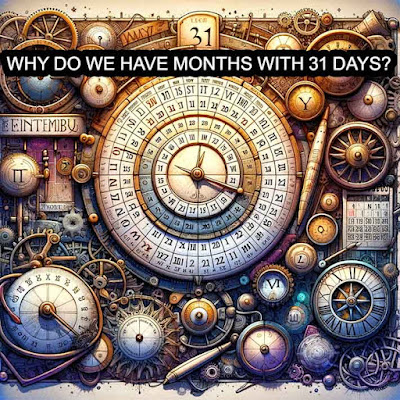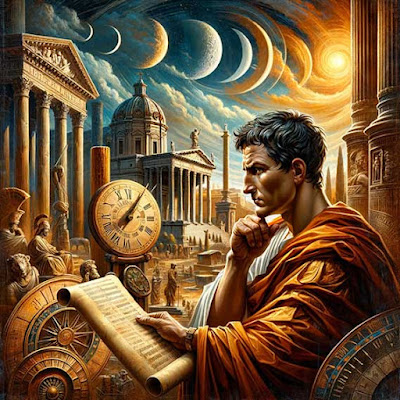
Early Civilizations and the Lunar Calendar
The history of the calendar in timekeeping dates back to the times of the early civilization of ancient people who needed the natural celestial bodies to serve as a measure for marking time signifying the passing of days, months, and years. Most of these early calendars were lunar: based on the phases of the moon and its approximate 29.5-day cycle. The lunar calendar was associated with the agricultural activities and the seasonal changes that are necessary for life; it acted as a guide to planting and harvesting schedules.
With the advanced societies, timekeeping became profound concerning accuracy, whereby the needs of agriculture and the development of solar calendars became associated with political and religious purposes. Solar calendars, based on Earth's orbit of the sun, permitted a far more accurate reading of time and were therefore instrumental for the organizing of society in that regard and for important religious ceremonies. The evolution of calendar systems over time portrays the intricate relationship between human culture, celestial observations, and the practical necessities of organizing communal activities. Ancient Lunar Observations. Ancient people derived the lunar calendar by observing the movement of the moon and human culture in general. As such, its tracking in the course of its phases has been seen as an opportunity to help societies determine the time and plan their activities. The lunar calendar was derived from the circled movement of the moon around the Earth, that is, the time the moon took to go full cycle phase.
The Impact of Lunar Calendars
These were, of prime importance in agricultural practices
for planning the sowing and harvesting seasons as well as religious ceremonies
and festivals. Dependence on the moon for time has implications over cultural
traditions and rituals as well that have shaped some of the norms and practices
within society. The calendar, at first, had been based on lunar observations,
but later on, the Greek people developed more sophisticated systems of the
calendar. This marked a huge leap in the way humans organized and understood
time.
Julius Caesar and the Reform of the Roman Calendar

The involvement of Julius Caesar with the calendar reform was so important to the extent that he eventually finished the establishment of the Roman calendar, which was named the Julian Calendar. The calendar then known as the Roman Republican calendar which they used at this time was an obsolete, erroneous one and made based on lunar observations. Another interesting year is 45 BC, when the Roman dictator, Caesar, in collaboration with his astronomer, Sosigenes, introduced a new kind of calendar, calculated upon the solar year, with it consisting of 365 days, alongside the introduction of an extra day.
This new calendar, called after Caesar, was actually ratified in 45 BC and was a substantial revolution in chronology. The concept adopted in the Julian Calendar was that of a 365.25-day year, which was very close to the real solar year length of about 365.2425 days. Overall, this meant better precision in season and agricultural cycle tracking—really important in an agrarian society such as the one that was in ancient Rome. Power of Roman Emperors The Roman Empire used to be under the power of various emperors wcould to even influence the calendar. Emperors such as Julius Caesar and Augustus sought to solidify their authority through reforms to the calendar. In 46 BCE, Julius Caesar adopted the Julian calendar to aid the synchronization of the solar year with the lunar calendar, and to establish his worth as a worthy and powerful ruler.
Later emperors followed suit and continued to reshape the
calendar in the interests of their own political and religious programs. The
Julian Calendar was further altered by emperors such as Augustus and Caligula
in ways reflecting the imprint of imperial decree upon time-reckoning. However,
the calendar did not only serve the function of measuring time but became
closely bound with the image and authority of the ruler revealing how the Roman
emperors incised their stamp on the process of time. The Reform of the
Gregorian Calendar
The Gregorian Calendar: Correcting the Julian Calendar's Inaccuracies
Towards the end of the 16th century, the reform in the Gregorian calendar was begun by Pope Gregory XIII to correct the inaccuracies seen in the Julian calendar. With time, it was realized that the calendar was out of synchronization with the solar year leading to seasonal drifts and hence religious implications for the commemorations.
In this manner, the Gregorian calendar redefined the leap year to better equate the length of the calendar year with the time it takes the Earth to orbit the sun. The new epoch was the more correct system of a date count, since errors in the Julian calendar have disappeared, having united civil and solar calendars.
Also read: Why Leap Year Comes in February
Astronomy
Another important science that helped to develop and create a calendar is astronomy. They were able to record and observe the movements of celestial bodies like the sun, the moon, and the stars to guide them in the timing of events and the establishment of their calendar systems. Most of the cultures had closely interlinked astronomical studies with religious practices, beliefs, and rituals, which further made it significant for the calendar systems. Other such celestial alignments, for instance, the solstices and equinoxes, however, are spiritually important besides marking the passage of time for many civilizations. Astronomy helped societies create a framework within which they would organize their day-to-day life, guided by important dremember importantand remebased important events basing on celestial events.
Impact of Religious Beliefs
Religious beliefs had exerthe ted great influence on the timing of important religious festivals and observances. Thus, one of the major factors that had shown a great impact in forming and organizing different calendars was important religious festivals and observances at a time in which they could possibly adhere to the related sacred events and ritual.
In other cases, religious calendars are based on one of the lunar or solar cycles, following the months and years which correspond to the states of celestial bodies. Such relations between the religious belief and nature raise the inevitable importance of spirituality and the natural world in the formation of calendar systems.
Cultural Influence on Calendar Systems
Each and every culture of each and every society on the
earth has left its own footprint on its own development of the calendar
system—with its own values, norms, and beliefs on which it stands. For
instance, the lunar calendar formed an integral part of religious ceremonies and
agricultural activities within ancient Egypt, indicative of how
cultural beliefs and practical needs came together to form the temporal order.
Likewise, in many Indigenous cultures, the calendar has often been deeply entwined with the natural environment and the changes taking place in nature, with concrete months or days instead being determined by such events of the cosmos, behavior of animals, or seasonal alterations. In such a connection to the environment, cultural views of time are thus closely linked to an ecosystem that a society exists within, forming their interpretation of time and the passage of seasons.
